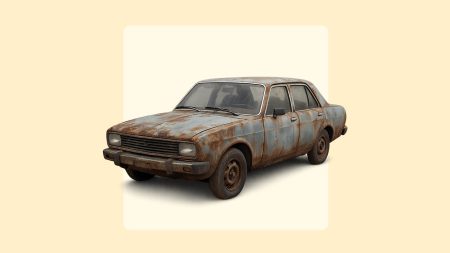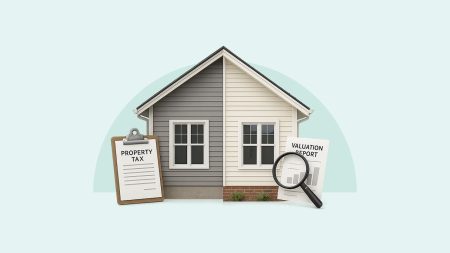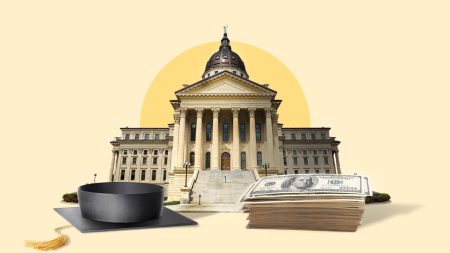Homeowners considering tapping their property’s equity can choose between two products: home equity loans and home equity lines of credit (HELOCs). Both have their pros and cons, but lately, the loans have gotten more popular than their credit line cousins. Home equity loan originations jumped 13 percent year-over-year – their highest level in nearly seven years, according to TransUnion’s latest “Mortgage Credit Industry Insights Report.” Meanwhile, HELOC originations rose only 8 percent.
Why the leaning towards home equity loans? “When market interest rates drop, as they did in late Q3 / early Q4 2024, consumers seeking to borrow against home equity may shift their preference to the fixed-rate HELoan product to lock in lower interest rates and [for] the certainty of fixed payment amounts,” says TransUnion Senior Vice President/Head of Global Research Charlie Wise.
But beyond borrower preference, there are other reasons why home equity loans currently seem to be a better deal than HELOCs.
Why are home equity loans more popular right now?
Several elements have created a perfect storm for home equity financing in general. Originations of new HE products (home equity loans, HELOCs and cash-out refinances) rose 10 percent year-over-year overall, according to the TransUnion report.
One reason for the interest: this decade’s dramatic rise in home values, which in turn elevates equity stakes. The average homeowner is sitting on about $400,000 of equity in their home, a 41 percent increase since 2020. That’s a tempting source to tap for funds.
Interest rates are also a major factor in the overall demand for home loan products, Wise notes. Home equity loans, in particular, are benefiting from a decline in the cost of borrowing, which began when the Federal Reserve started cutting rates late in 2024. “In general, we have seen that when interest rates are low, consumers seeking to tap into their home equity will gravitate to fixed-rate loan products, specifically cash-out refis and HELoans, to lock in a lower interest rate over the life of the loan,” says Wise.
But a cash-out refi – which replaces a primary mortgage with a new bigger one that includes a ready-money payout – doesn’t appeal to many homeowners. They have locked in super-low mortgages charging 3 or 4 percent – which, with current mortgage rates hovering around 7 percent, they’d lose by refinancing. So, instead, they’re turning to second-lien options like home equity loans that complement (rather than replace) a primary mortgage.
Home equity loan vs. HELOC
But why a home equity loan over a home equity line of credit (HELOC)? Both have benefited from the Fed’s cuts and gotten cheaper in the last half-year. But if you think interest rates are bottoming out, it’s better to lock in a low cost with a home equity loan, which carries a fixed rate. HELOCs typically have variable rates, and so could start rising again.
Also, because their rates can rise, HELOCs often carry more stringent credit score and other requirements. “HELOCs have been harder to come by for some borrowers, which may be pushing them towards the HELoan option,” says Stephen Kates, financial analyst at Bankrate.
Lenders promoting loans
In opting for home equity loans, consumers may also be responding to subtle lender campaigning. “Lenders, anticipating future [Federal Reserve interest] rate cuts, may be focusing on HELoans over HELOCs due to the fixed-rate nature of the former, which would be a better product for the bank,” Kates notes. Here’s why: Home equity loans provide lenders with a steady, fixed return. Even if prevailing interest rates fall, lenders could keep earning above-market interest on the loans for years to come – since borrowers would have to refinance to get a lower rate, and not everyone would bother or be able to.
Plus, as Bankrate Senior Industry Analyst Ted Rossman points out, “some lenders likely prefer the certainty of home equity loans, as opposed to more flexible home equity lines of credit, given all of the uncertainty in the world right now, like tariffs, geopolitics, recession worries, etc.”
As a result, some lenders are getting more competitive to encourage a clientele. “Lenders may be sweetening the terms of their home equity loan offerings to ensure that consumers would prefer that product, which also provides more protection against default with built-in amortizing and set payments,” says Sarah DeFlorio, vice president of mortgage banking at William Raveis Mortgage, a Connecticut-based lender and broker.
What are the advantages of home equity loans?
In addition to their fixed rates and predictable payments, home equity loans offer several benefits:
-
You get all the money upfront and can use it right away, or park it (preferably in some sort of interest-bearing account) as you see fit.
-
You’ll know exactly when the loan will be paid off: Like mortgages, home equity loans have set repayment terms, from 5 to 30 years.
-
The rates are usually lower than personal loans or credit cards. As the loan is secured by your home, its interest rate is much less compared to unsecured options, like personal loans.
- You might get a tax break. If you’re using the loan to improve your home, the interest could be tax-deductible.
Home equity loans also tend to have fewer ongoing charges than you would encounter with a HELOC: “You might have an annual fee, a per-use or -draw fee or closure fee,” says Scott Bridges, chief consumer direct lending officer at Pennymac, a California-based home equity lender. “They [home equity loans] don’t have any of that. When you get a home equity loan, it’s very straightforward. Get your lump sum of cash, and you can use it for any reason you see fit.”
Who is best suited for a home equity loan?
A home equity loan might be the best option for you if:
- You have a specific, one-time expense and know exactly how much money you need.
- You prefer predictable monthly payments and want to avoid surprises.
- You have a steady, stable income that can support regular repayment.
- You want to lock in a fixed rate before interest rates potentially rise again.
And what if you guess wrong, and interest rates fall? It really might not matter that much over the long-term. “The nice thing about a home equity loan is even if the [prevailing] rate changes a little bit, these things are financed over 15, 20 or 30 years,” says Bridges. That would average out to just a few dollars less a month. “It’s not a big deal. We’ve had this product for a few years, and it’s not dramatically moved in one direction or another with a swing in rates. That’s part of the appeal to the borrower.”
Choosing between a home equity loan and HELOC
Right now, with home equity loan and HELOC rates running neck and neck (both are around 8.25 percent), it’s hard to choose between them. But, Rossman says, not every homeowner should solely base their decision on rate trends. Deciding which one offers the better deal depends on your income/other debts, cash flow, and how you plan to use the money.
“It’s worth asking yourself if you know how much you’re going to be borrowing or if it’s more open-ended,” he says. “If you think you need more flexibility, a HELOC is likely a better choice.” If, on the other hand, you’re more of a get-it-and-forget-it type, the home equity loan would suit you better.
Why we ask for feedback
Your feedback helps us improve our content and services. It takes less than a minute to
complete.
Your responses are anonymous and will only be used for improving our website.
Help us improve our content
Read the full article here












